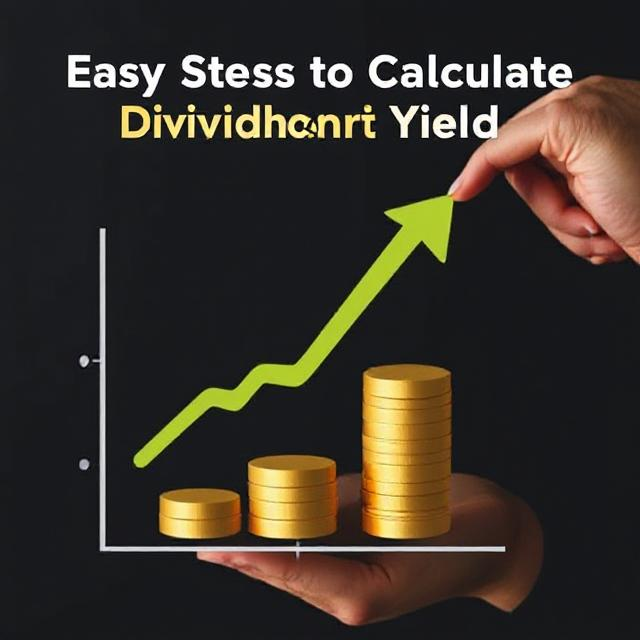Dividend yield is a key factor of financial interest, and it measures how much a company returns in dividends to its shareholders, compared to its current market price per share. Thanks to its expression in percentage, dividend yield helps investors assess how much their investments are earning.
Understanding Dividend Yield
The dividend yield can be computed using this formula:
Dividend Yield (%) = (Annual Dividend per Share / Current Market Price per Share) × 100%
This dividend yield formula indicates what portion of a company’s stock price is paid out as dividends each year.
Key Steps in Calculating Dividend Yield
1. Find the Annual Dividends per Share:
Check the recent announcements of dividend declarations to ascertain the amount per share.
If the company issues dividends quarterly, take the latest declared quarterly dividend and multiply it by four to arrive at an annual dividend estimate.
2. Find the Current Market Price per Share:
You will then check the latest price at which it was sold online via another recognized brokerage or website.
3. Now Put the Values in the Dividend Yield Formula:
Put annual dividends per share over the current market price per share.
Now take that total and multiply by 100 to get a percentage..
Let’s say there is a company, XYZ, and it pays a quarterly dividend of ₹2 per share, and it has a current stock price of ₹80.
Annual dividend per share is thus:
₹2 (quarterly dividend) × 4 = ₹8
Current market price per share:
₹80
Dividend Yield Calculation:
(₹8 ÷ ₹80) × 100 = 10%
Thus it means that the dividend yield of Company XYZ is at the 10% level, and this shows that an investor earns 10% by dividends every year via their investment.
Dividend yield interpretation
A higher dividend yield is attractive. It shows that sufficient returns from income options can be offered by investing in that asset. However, one must observe the following:
Sustainability: Assure that the company can keep paying dividends. Very high yields might therefore be an indication of financial trouble or an unsustainable payout, as the company would have to drastically lower dividends later.
Growth opportunity: Companies with lower dividends prefer to reinvest profits in growth, leading to capital appreciation.
Industry averages: Dividend yield differs across industries. Only by comparing the yield of a firm to its competitors can a better assessment of performance be made.
There Are Limitations of Dividend Yield
Despite its useful nature, it has some limitations:
Price Sensitivity: When the stock price falls, it reportedly increases the dividend yield, often masking underlying company troubles.
Dividend Cuts: In the event of difficult times for a company, a high yield frequently refers to a high probability of a future cut in dividends.
Conclusion
With an uncomplicated calculation of dividend yield, it is possible to gain useful insight into the income-earning capability of an investment. An investor should understand and interpret this metric to make decisions informed by their financial goals and undertaken level of risk.
Dividend yield is a good indicator when it comes to analyzing the income potential of an investment; however, stock evaluation should extend beyond such measurements.
In addition to yield percentage, the stability of dividends, payout ratio, and total return potential must all be measured. A dividend-notable history denotes financial soundness, while a high payout ratio may signify an unsustainable dividend policy. In addition to these factors, macroeconomic considerations such as interest rates, inflation, and sector-specific trends affect dividend payers.
Also, tax implications, the company’s dividend policy, and the expected dividend growth are crucial for long-term returns. Some sectors, like utilities and REITs, tend to pay higher yields, while growth industries will more often favor reinvestment over payout.
Evaluating these criteria allows investors to come to a very well-informed conclusion that encapsulates their objectives and tolerances for risk.






